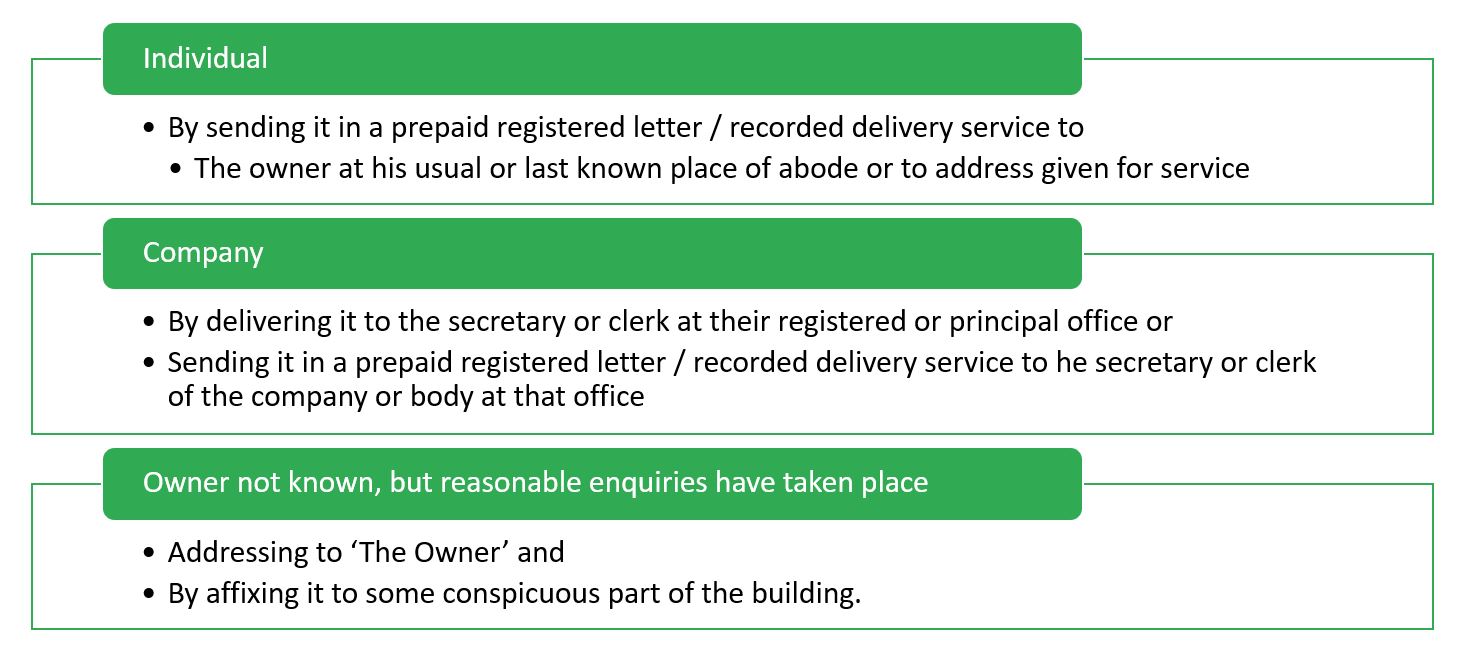 Following our recent webinar on completion notices, we wanted to share a number of top tips and insights discussed in a two-part blog.
Following our recent webinar on completion notices, we wanted to share a number of top tips and insights discussed in a two-part blog.
Alistair Townsend kicked off the proceedings by talking about the key pieces of legislation governing completion notices and the statutory provisions which support this namely the Local Government Finance Act 1988 (s.43, 45 & 46A) for Business Rates and The Local Government Finance Act 1992 (s. 6-9 & 17) for Council Tax.
Two types of completion notice
There are effectively two types of completion notice, those where properties are not yet complete – where work remaining to be done on a new building can reasonably be expected to be completed within three months and the Authority ‘shall’ serve a notice, and those where properties are complete and the Authority ‘may’ serve a notice.
The importance of communication with the VOA
One of the cases referred to in the session was Watford BC v Parcourt Property Investment Co Ltd 1971. The Valuation Office entered the property into the rating list, no completion notice was served by the Billing Authority, no payment was made and so enforcement action commenced. The ratepayer argued that the building wasn’t complete and since no completion notice had been served, it should not be in the list. The High court determined that as the building was not complete, the Billing Authority was required to serve a completion notice and as it had not done so, no debt was due.
In the Porter (VO) v Trustees of Gladman Sipps 2011 case, the Valuation office entered the property in the list as it was deemed ‘nearly’ or ‘very nearly’ complete (within three months), this was done before the Billing Authority served a completion notice. The Upper Tribunal held that even if the property was not complete a completion notice is necessary.
The key point to note here is that if the property is not yet complete, a Completion Notice is an absolute requirement for it to be entered into the list and Billing Authorities are responsible for ensuring this happens in a timely manner.
Building vs Hereditament
The session also covered the fact that completion notices only refer to ‘buildings’ and not ‘hereditaments’. The Billing Authority is responsible for identifying new buildings which are complete or can be completed within 3 months. But it is the VOA who is responsible for determining how many separate units of assessment exist within that building. With business rates this can be more complex where developers intend to separate out the property for different units of assessment.
Brent London Borough Council v Ladbroke Rentals Ltd 1980, illustrates the importance of this, where a completion notice was served in relation to a whole building encompassing six-storeys. The building was then later split into separate hereditaments with two floors part leased. Because the property as a whole was entered into the list, the three month exemption period had expired before the split, meaning the ratepayer for the hereditament that was split, who wanted exemption for the date of the split, was not entitled to a new exemption period. It was then held that the date of completion of that new hereditament was the date when the whole building was deemed to be completed.
Service of Completion Notices
It is crucially important to get good service of your completion notice in accordance with legislation. If service is not effected correctly it can be deemed invalid and if so, it is as if it never existed. If this is the outcome, it could be some time down the line before a Tribunal makes such a determination, the result being a significant loss on income for the intervening period. Getting service right is important to counteract the argument of invalidity.
The image below best highlights the statutory provisions on serving a notice under Schedule 4A of the LGFA88.

Case Law based on ‘service’ and ‘owner’
The session also covered the definition of an ‘owner’ in the case of Business Rates, it is the person entitled to ‘possession of the building’ and in terms of Council tax it refers to whoever has a ‘material interest’ in the dwelling.
There are a number of cases related to the ‘service’ and the ‘owner’ worth mentioning. The first is Prudential Assurance Company Ltd vs Valuation Officer (UTLC) 2011. The completion notice was served on the developer and not the owner, the completion notice eventually found its way to the owner who agreed a date with the Billing Authority. The owner then appealed stating the completion notice was invalid and so agreement void. The final decision stated that because an agreement was made on a date, the fact that the completion notice was never served to the owner should not be a factor, however had no agreement been made on a date, the completion notice would not have been validly served.
In the case of Friends Life Co Ltd v Alexander (VO) & Huntingdonshire DC 2012, the Billing Authority served the notice to the people who previously owned the property. So as it was not served on the owner, the completion notice was not valid and the property removed from the rating list all the way back, leading to significant loss in revenue for the Billing Authority.
The UKI Kingsway Limited v Westminster CC 2018 case is also worth mentioning as it is considered a game changer going all the way to the Supreme Court which was then binding on all the lower courts. The completion notice was hand delivered to a receptionist at the building but she was employed by the facilities management company, so not deemed the owner. The notice was then scanned and emailed to the owner. The owner then appealed because it was not directly served on them, it went all the way through the court with the final outcome being that it was well served and so ultimately it stood.
The latest case mentioned was Hurstwood Properties (A) Ltd and others v Rossendale Borough Council and another [2021] UKSC. Whilst not directly related to the service of completion notices, it did consider ‘owner’ in terms of ‘the person entitled to possession’ under s.65 LGFA88. The Supreme Court determined that it was appropriate to consider the “real and practical ability either to occupy the property or to put someone else into occupation of it” and not just the literal test of a leasehold or freehold interest. It will be interesting to see whether this impacts upon the lower courts in relation to service of completion notices in future.
What is clear is that Billing Authorities should make every reasonable effort to ensure completion notices are served on the person entitled to possession in a real and practical way and verifying the current details they hold on who that is, are correct.
Options for Owners when served a Completion Notice
When served a completion notice owners can choose to do nothing and if they do this, the completion date will be as stated on the completion notice. They can also get back in touch with the Billing Authority and agree a different date but this has to be in writing and if they do that, the completion notice is deemed to have been withdrawn. There is no time limit for this and no restriction as to what date can be agreed, it can just be agreed.
The process for Appeals
If the owner doesn’t agree with the notice they can appeal and if they do appeal then this goes directly to the Valuation Tribunal (VT). If they go down this route then it must be within 4 weeks of service of the notice, although the VT can extend this on application if they choose.
The appeal must be served on the clerk to the VT and must include a copy of the completion notice and a statement of the grounds for appeal.
If this has all been done the Clerk must respond within 2 weeks and serve a copy of the appeal back to the Billing Authority, so they know what is happening.
Whilst an appeal is ongoing the VO is required to use the date on the completion notice until anything further comes through so the property will be entered into the list ‘as is’ even if an appeal is in place.
If an agreement is reached after an appeal is made the Billing Authority has to formally withdraw that completion notice and reissue a new one.
Options for the Valuation Tribunal for England
The VTE have a number of options as to what they can do with an Appeal, they can dismiss it and uphold the completion date in which case it is entered into the list. They can determine the completion day themselves if they wish or they can determine that the completion notice was invalid and quash it. Although there is case law out there to suggest that the VTE does not have the power to quash completion notices (London Borough of Newham v Rad Phase 1Type B Property Company No1 Ltd (2020)).
Conclusion
We hope you found our tips on completion notices informative, particularly the anecdotal case law which helps highlight some key factors to consider when issuing them. Check out our next blog in this two-part series which will provide some practical considerations to take into account when issuing completion notices and attempts to define what we mean by the term ‘complete’.
If you want to find out more about our services in this area please contact soneill@wilks-head.co.uk or atownsend@wilks-head.co.uk
Want to view a recording of the webinar this blog is based on? – you can request it here >
